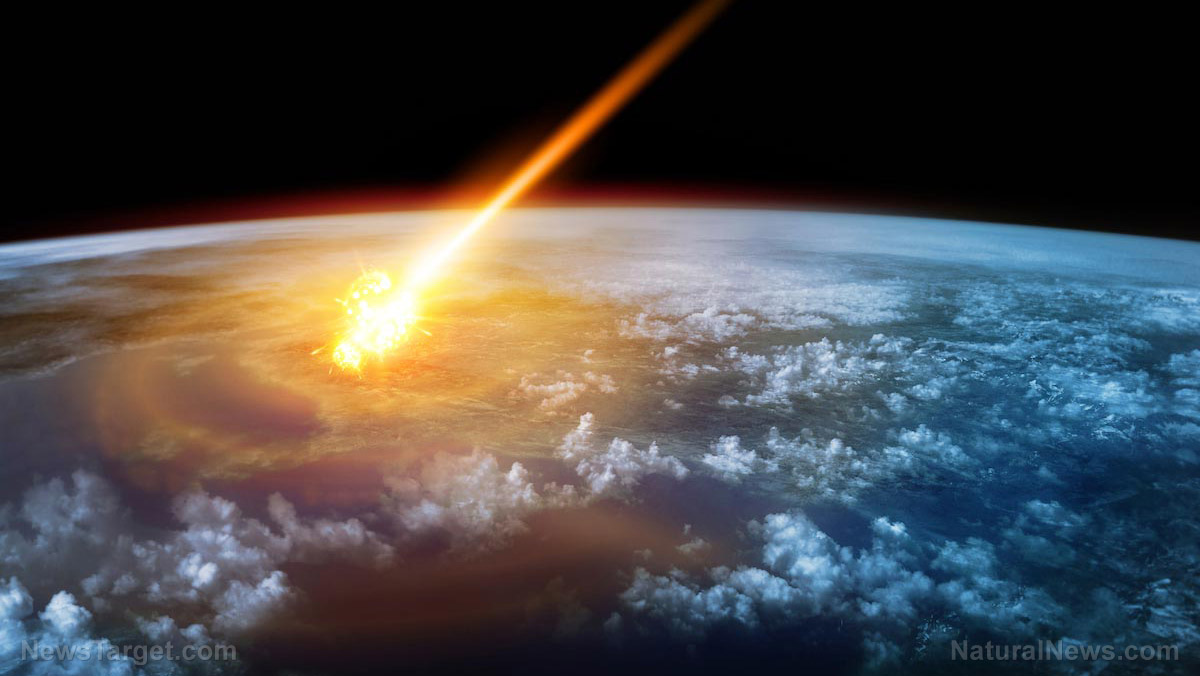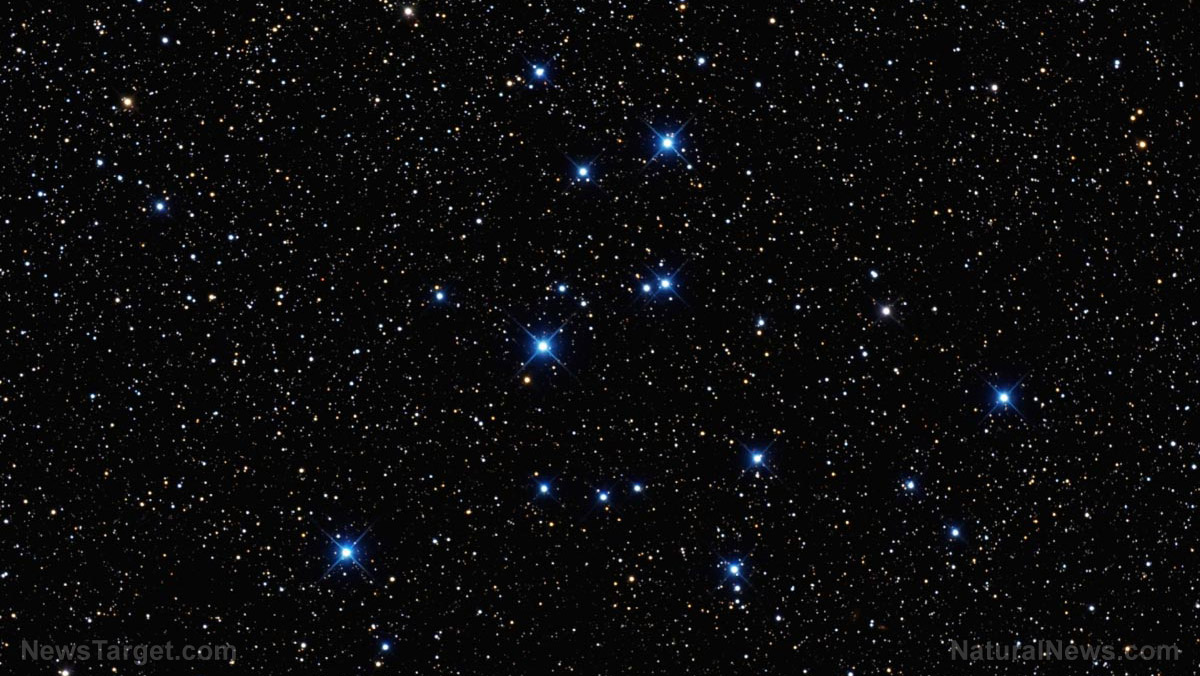China’s Jinlin crater confirmed as Earth’s LARGEST impact site in over 11,000 years
11/18/2025 / By Kevin Hughes

- Scientists identified the 900-meter-wide Jinlin crater in southern China – the largest known impact crater formed in the last 11,700 years, surpassing Russia’s 300-meter Macha crater.
- Planar deformation features (PDFs) in quartz samples confirm extreme shock pressures (10–35 gigapascals) only possible from extraterrestrial impacts, ruling out Earth-based geological processes.
- Despite heavy monsoons and erosion, the crater remains intact with clear shock-metamorphic granite layers, defying assumptions that tropical climates erase impact evidence.
- The crater’s fresh granite debris suggests formation within the last 10,000 years, making it a critical record of Earth’s Holocene impact history.
- The discovery highlights the underestimated frequency of smaller but devastating impacts (like Tunguska IN 1908) and underscores the catastrophic potential if such an event struck a populated area today.
Scientists have confirmed the discovery of the largest known impact crater formed on Earth in the past 11,700 years – a staggering 900-meter-wide depression nestled in the granite hills of southern China.
The Jinlin crater, located in Deqing County, Guangdong Province, offers unprecedented insights into the scale and frequency of cosmic collisions during the Holocene epoch, our current geological era. The crater, first identified by researchers from the China Academy of Engineering Physics (CAEP), dwarfs all previously recorded impact sites from the Holocene period.
Prior to this discovery, Russia’s 300-meter Macha crater held the record as the largest known impact structure from this era. “This discovery shows that the scale of impacts of small extraterrestrial objects on Earth in the Holocene is far greater than previously recorded,” said Chen Ming, lead researcher and author of the study published in Matter and Radiation at Extremes.
BrightU.AI‘s Enoch engine defines an impact crater (also known as an asteroid crater or meteorite crater) as a depression in the Earth’s surface caused by the impact of a large, high-speed object such as a meteorite, asteroid or comet. These craters are formed when a high-velocity impactor collides with the Earth’s surface, transferring a significant amount of kinetic energy into the target material – which then vaporizes, melts and ejects outward, leaving behind a bowl-shaped depression.
Evidence of a cosmic catastrophe
The Jinlin crater’s preservation is particularly striking given the region’s monsoons, heavy rainfall and high humidity, which typically accelerate erosion. Yet the structure remains intact, with clear shock-metamorphic features in its granite layers – undeniable proof of an extraterrestrial collision.
Researchers found planar deformation features (PDFs) in quartz samples – microscopic fractures that only form under extreme pressures (10 to 35 gigapascals), far beyond what Earth’s geological processes can produce.
“On Earth, the formation of planar deformation features in quartz is only from the intense shockwaves generated by celestial body impacts,” Chen explained. “This is a shock effect that cannot be produced by any geological process of Earth itself.”
The impactor – likely a meteorite – struck with devastating force, releasing energy equivalent to 600,000 tons of TNT. The collision carved a bowl-shaped depression 90 meters deep, tilting slightly southwest along the mountain slope.
Unlike older craters that have eroded beyond recognition, the Jinlin crater’s relatively fresh granite debris suggests it formed within the last 10,000 years. Its southern rim features a V-shaped gap, allowing rainwater drainage and forming deep gullies – evidence of ongoing erosion.
Before this discovery, only four confirmed impact craters had been found in China, all in the northeast. The Jinlin crater is the first in southern China, challenging assumptions that tropical weathering erases such structures.
A geological time capsule
The findings underscore how much of Earth’s impact record remains hidden. Unlike the Moon, where craters persist for billions of years, Earth’s dynamic geology – erosion, tectonic shifts and ocean coverage – obscures most traces of past collisions.
“The impact crater is a true record of Earth’s impact history,” Chen emphasized. “This discovery provides us with a more objective basis for understanding the distribution, geological evolution and impact history of small extraterrestrial bodies.”
While the Jinlin crater is ancient by human standards, its discovery raises awareness of modern asteroid threats. Smaller impacts, like the 1908 Tunguska event (which flattened 2,000 square kilometers of Siberian forest), occur more frequently than catastrophic Chicxulub-scale events.
If a similar impact struck a densely populated area today, the devastation would be catastrophic. As scientists continue uncovering Earth’s hidden craters, the Jinlin discovery serves as both a scientific milestone and a reminder of our planet’s violent cosmic encounters.
Watch this video about meteors, comets and craters.
This video is from the Eric Dubay channel on Brighteon.com.
Sources include:
Submit a correction >>
Tagged Under:
1908 Tunguska event, Asteroid, asteroids, CAEP, Chen Ming, Chicxulub, comet, cosmic, cosmic impacts, Deqing County, Earth, Guangdong Province, Holocene period, impact crater, Jinlin crater, Macha crater, Meteor Crater, Meteorite, quartz, Russia, Space
This article may contain statements that reflect the opinion of the author





















